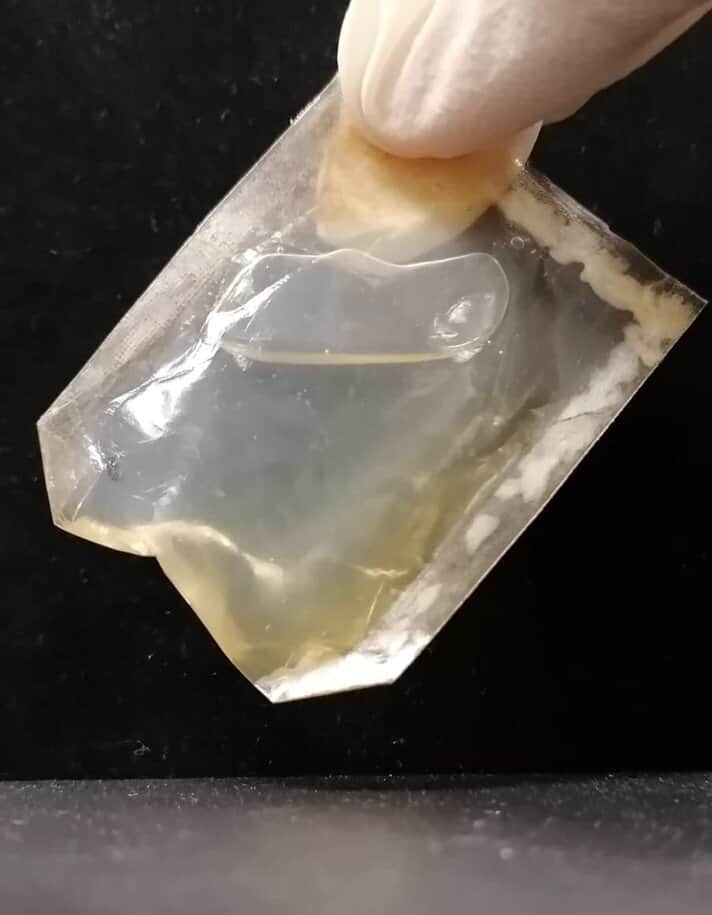Imagine biting into a snack, enjoying its delicious taste — and then enjoying the wrapper as delicious and nutritious as the food inside. It may sound like a scene from a science fiction movie, but it could soon be reality. Scientists in China are promising to revolutionize the packaging industry by creating an edible, transparent, and biodegradable material that combats the ever-growing problem of plastic waste.

The production of plastics has nearly doubled since 2000, with no sign of slowing down. In fact, plastic pollution has been constantly and steadily on the rise. We’re also pretty bad at recycling plastic, too. About 80% of all newly manufactured plastics either end up in landfills or found their way into the environment. This has turned plastic waste into a massive environmental problem.
Researchers at The Chinese University of Hong Kong (CUHK) focused on bacterial cellulose (BC), an organic compound derived from bacteria. BC surpasses plant cellulose in several key aspects. Its notable advantages include superior water-holding capacity, higher tensile strength, a distinctively soft texture, and a high fiber content.
BC can be synthesized through microbial fermentation, eliminating the requirement for tree or crop harvesting. This production method has significant environmental benefits, as it does not contribute to deforestation or habitat loss. “It’s a more sustainable material alternative to plant cellulose,” Professor To Ngai, study author, said in a statement. To make matters even better, it can be scaled with ease, the researchers say.
Alternatives to plastics
Previous studies have looked at the potential of BC, including its use in packaging, smart films, and functionalized materials. While they have demonstrated the potential of BC as a replacement for single-use plastics, its widespread adoption has been limited by its sensitivity to moisture in the air, affecting its physical properties.
Ngai and his research team found an innovative way to overcome these limitations. They introduced specific soy proteins into the composition and applied a protective coating with exceptional oil resistance. In the end, the researchers created durable, transparent, and edible composite packaging utilizing BC as its base material.

“It doesn’t require specific reaction conditions like chemical reactions, but rather a simple and practical method with mixing and coating. This approach offers a promising solution to the challenge of developing sustainable and environmentally friendly packaging materials that can replace single-use plastics on a large scale,” Ngai said.
The study found that this plastic alternative based on bacterial cellulose could be fully degraded in one to two months. Unlike other bio-derived plastics, BC doesn’t need specific industrial composting conditions to degrade. It’s also fully edible, which makes it safe for all sea animals such as turtles that can eat it without any toxicity risks.
Up next, the researchers are looking at how to broaden the potential applications of modified BC films, increasing their versatility. Specifically, they are working on a thermosetting adhesive capable of establishing robust bonds between BC. This would facilitate the molding of BC into diverse shapes when exposed to heat, they argue.
Ngai hopes that their new study will be a step in the right direction to address the unnecessary use of single-use plastics, which can persist for hundreds of years. “This research serves as a reminder that natural raw materials may already possess the necessary characteristics to perform beyond the functions of plastic packaging,” he said.
The study was published in the Journal of the Science of Food and Agriculture.


